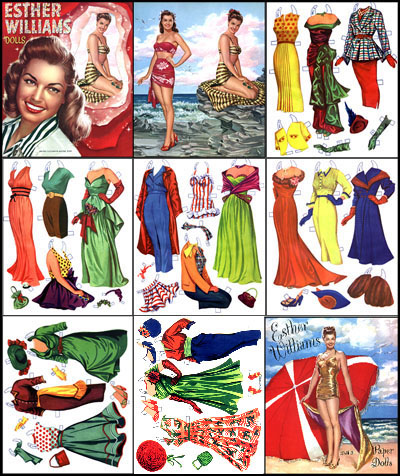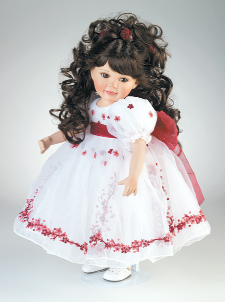The other day I decided I had to get moving again. Sitting on my duff might be helping me cerebrally, but not cardiovascular-ly (if that’s even a real medical term, or an English word). Sitting down before a computer screen for an extended time certainly transforms a girl’s silhouette into something resembling a Weeble Wobble’s. That’s a sad fact of life. However much I may envy their roll-with-the-punches resiliency—they wobble but they don’t fall down—I dearly wanted to restore some semblance of my former womanly charms.
As I launched into my new walking regimen, accompanied by a stalwart companion who also wants to shed a few pounds, I happened to notice a paper cutout floating facedown in a rain puddle. I bent down (ouch!) to examine it more closely, and, sure enough, it was a little figure of a child swirling in the water. I felt bad for the pint-sized waterlogged creation. How did it end up there? Did it fall out of a schoolchild’s bookbag? Was it thrown there deliberately in a fit of rage or by accident? Did its owner realize that the tiny paper pal was gone, and now tears were streaking down her own face?
The odd thing about all paper dolls is that they are designed to be ephemeral. If you buy a paper doll book and follow the instructions on the cover, the lifespan of your doll won’t be very long. The clothing loses its clinging abilities pretty quickly; the doll itself starts to crease and exhibits wear-and-tear after a few intense play sessions. Paper crumples and crinkles, and paper dolls and their wardrobes follow suit.
 That’s why it’s difficult to keep a paper doll if it’s actually been played with and handled. They don’t survive human contact too well. When I mentioned my musings to my walking pal, she agreed wholeheartedly. In fact, she has her own paper doll confession.
That’s why it’s difficult to keep a paper doll if it’s actually been played with and handled. They don’t survive human contact too well. When I mentioned my musings to my walking pal, she agreed wholeheartedly. In fact, she has her own paper doll confession.
When she was a young child, she and her older sister were surprised with an “Esther Williams” paper doll book. The set had two versions of Esther, and the older sister was allowed to choose her doll first. My friend, the younger sibling, had to make “do” with the leftover doll. Though she spent many hours playing joyfully with her second-best Esther, she never forgot that slight. She hadn’t gotten to make the original choice.
Fast-forward decades later, to the age of eBay, and my friend finds the authentic Esther Williams paper doll set for sale online. This is before she has become cyber savvy, and Internet buying is in its infancy. Seeing those Esther Williams originals opens up a flood of uncontrollable juvenile memories. She clicks, bids and wins, paying, she figures, about 60 times more than what they originally sold for in the 1950s. If the original purchase price was 25 cents, she has gone way over the hundred-dollar mark.
Today, she still has those paper dolls, and though she’s not sitting in her home, cutting and draping, she does keep them as a reminder that she made the choice to buy them and she’s deserving of both Esthers: even the forbidden one in the gold lamé swimsuit, which she had always coveted and desired.
Paper dolls are odd that way. They can be bought as a fleeting pastime, a last-minute addition for a rainy Saturday afternoon, something that an aunt or a grandmother brought over to occupy you. They end up doing that and so much more. Twenty years later you can still remember the feel of daintily cutting along the edges and slipping the fragile gowns over the doll’s bare, welcoming shoulders.
I recall all my paper dolls and regret how shabbily I treated them. I took them for granted—much like I did my former slim rump. I hope one day to walk my butt off, and then I can slide into a bathing suit without self-conscious anxiety. If all goes well, I hope to be joining Esther Williams in her gold lamé splendor. Paper dolls and youth—they’re both too gosh darn ephemeral.
Photo Caption
She was known as the million-dollar mermaid. Singer, swimmer, actress Esther Williams had a physique that was enticing to paper doll artists. The athletic yet curvaceous bathing beauty was the subject of dozens of paper doll books.







